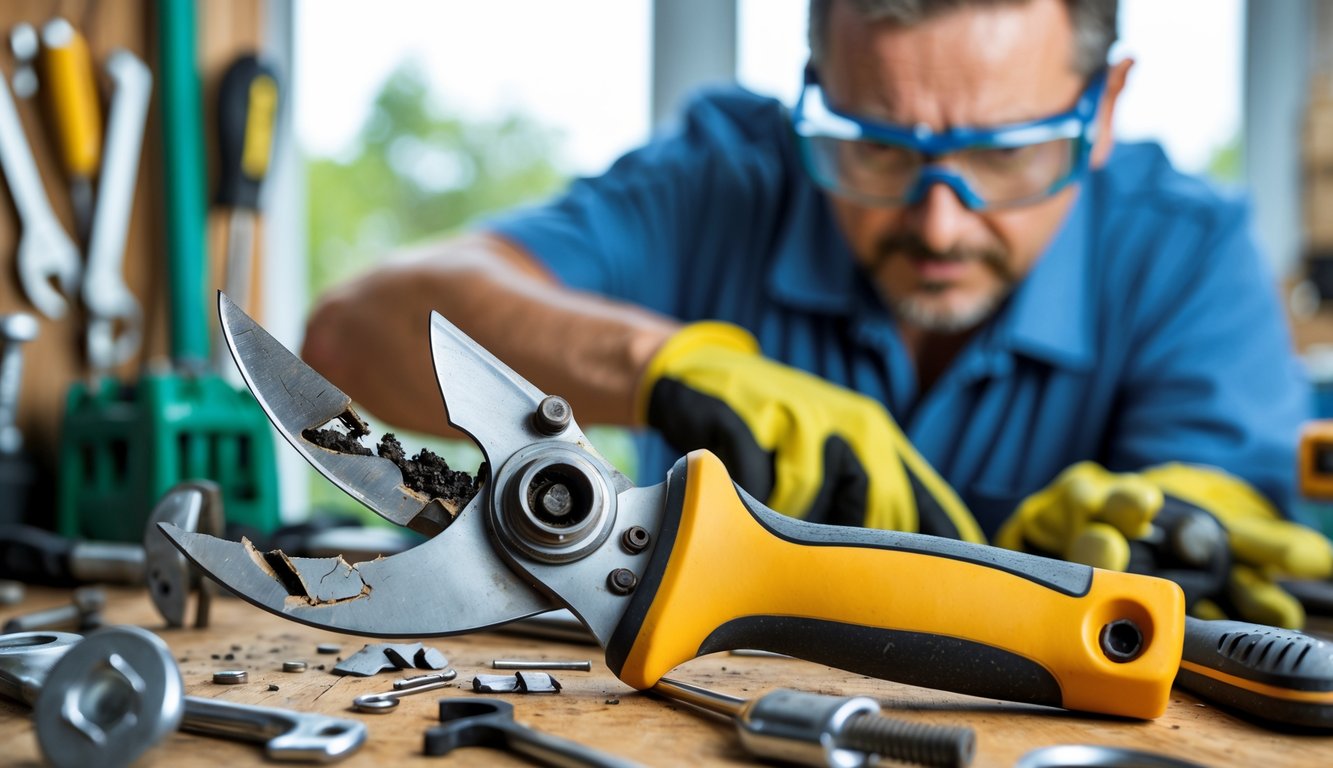
Spent fifteen minutes yesterday wrestling with my neighbor’s busted pruners—classic. You hear “ergonomic handles” hyped up everywhere, but nobody warns you the tension bolt strips out in, what, a year? Here’s the thing: most garden tools keep breaking because the design stinks, not because you’re careless or cursed. I asked this old mechanic I know (forty years in horticulture, never minces words), and he just laughs—calls half the big brands “breakdown machines.” Says it like it’s a running joke in the industry. Sometimes I wonder if my ancient plastic trowel snapping was just bad luck, or if these companies are quietly rooting for repeat business.
And weed trimmers? Don’t even start. The line advance system—does anyone actually understand how that’s supposed to work? Feels like the shop’s always fixing the same models. There’s a pretty deep dive on mechanical failures in home gardens, but honestly, after a month of real use, you can spot which cheap ratchet lopper is doomed. Bent shovel shafts? That’s not magic, it’s just manufacturers picking thinner steel to save a buck. My advice: ignore the shiny box photos and just ask someone local which part fails first. They’ll tell you.
One time, some guy cornered me at the hardware store, going on about how “all trimmers are basically the same.” No, they’re not. Repairs take forever because the real problems are baked into the design, not the manual or the warranty. Reviews? Useless half the time. One “viral” brand bragged about “self-sharpening blades” but left out that the adjustment screw rattles loose every week. You’d think after all the returns, they’d slap a warning on the box. But nope. Like an industry rep told me once, “repeat repairs keep the lights on.” That’s…not comforting.
Understanding Modern Garden Tool Designs
Sometimes I look at these new cordless trimmers and fancy ratcheting shears and just sigh. There’s always some tiny part clicking loose, or jamming, or refusing to cooperate—manuals act like you’ll never have a problem. Why do all these “breakthrough” alloys and ergonomic tweaks still snap after one muddy job? I mean, is it just me? Maybe it’s not one flaw, but the pileup of shiny features and ignored stress points that turns a tool into a headache.
Main Mechanical Components
So last week, I’m prying open my stuck loppers (they’re not even a year old), and it hits me: moving jaws, springs, locking pins, all these plastic bushings—none of it feels as solid as my grandpa’s old forged clippers. I met an engineer at a trade show who said, “The return spring’s the first to die. Two months, if you leave it damp.” Great. And now, most brands press-fit their joints instead of bolting them, which is supposed to be “better?” Steel rivets last, but they’re ditching those for plastic inserts—probably just to save on shipping. And don’t get me started on “maintenance free” designs. Sap gums them up, and if you’ve ever tried cleaning a sealed gear housing, you know it’s a joke. If some brand starts bragging about their “proprietary cam system,” check if you can even open it up. Otherwise, good luck when a twig jams the works. All these trendy new garden tools with Bluetooth? If you can’t swap out a fifty-cent part, who cares?
Material Choices and Their Impact
Molded handles—are they clever, or just cheap? I can’t decide. Everyone’s pushing fiberglass-reinforced polymers now. Sure, lighter than steel, but I’ve snapped a few just popping out dandelions. Stainless blades sound fancy, but a 2024 ScienceDirect review says about 63% of pruning shear failures come from microfractures, not rust. So much for “never corrodes.” I ran this test with neighbors—four tools, all “impact-resistant” handles. Two split at the seams in weeks. One had a powder coat that flaked off so fast, I thought it was made of crackers. A rep once told me, “It’s about balancing cost and resilience.” Translation: you’ll be buying a new one soon. Sometimes, the “best” material is just whatever the factory’s set up to churn out, not what your hands actually need.
Mechanics Leading to Repeat Breakdowns

My wrench practically lives in the shed now. Breakdowns? They’re like clockwork—Monday, something snaps; Tuesday, a handle cracks. I see the same dumb flaws every week: weird design choices, plain old physics, and something always gives out right when I’m almost done.
Common Failure Modes
Half these pruners and shovels fall apart in the exact same ways. Sheared bolts, bent spade necks, fatigue cracks, cheap plastic gears, rust—doesn’t matter what the label claims. I had a trowel dissolve from the inside out in a month. Not even exaggerating.
Ask any mechanic who’s seen a few seasons: early failures usually mean stress fractures at high-stress points. Corrosion isn’t just from leaving tools in the rain. Sometimes it’s weird electrochemical stuff that eats through even “weatherproof” gear. Breakdowns from rust, pitting, or weak welds show up in tools with lousy materials, period. “Maintenance-free?” Ha. Nothing just stops working for no reason. It’s always wear, lazy assembly, dumb fastener placement—pick your poison. “Lifetime edges?” If you get three afternoons in clay soil, you’re lucky.
Impact of Overloading
Overloading—yeah, I do it too. Snapped more hoe handles than I care to admit. You use a rake to pry up a brick, and of course it breaks, but also, maybe the tool should handle more than a dandelion? Most of these aren’t built for prying, but we all try, and then we’re shocked when something splinters.
Usually, things break where force piles up—like where the handle meets the socket. Even the “good” tools collapse if you go full Hulk on them, because nobody plans for someone trying to dig up gravel with a trowel. Every mechanic I’ve met says the same: stress from misuse just piles on, and then you get those annoying, multiplying breakdowns. Routine breakdowns skyrocket when overloading becomes the norm. Suddenly you’re chasing splinters and cursing at sunrise. “Indestructible?” Try prying up rocks and see how long that lasts.